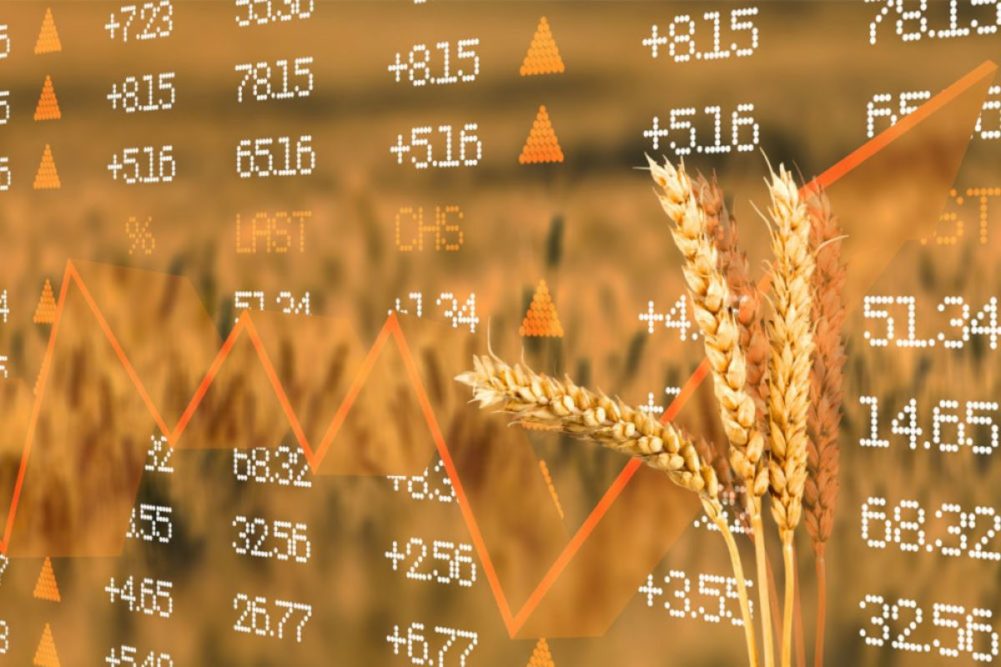KANSAS CITY, MISSOURI, US — Ingredient prices were mixed in 2022. Several backed off from 2021 but remained historically high. Some strengthened. A few set record highs.
Weather, geopolitical events and disease (in poultry and people) fueled market volatility, most evident in futures prices but also a factor in several cash markets.
While prices in late December 2022 were mixed compared with a year earlier, the snapshot price doesn’t reflect highs and lows throughout the year with prices generally strong historically.
Russia’s invasion of Ukraine on Feb. 24, 2022, set the stage for volatility in grain, oilseed and edible oils markets, raising concerns about supplies of wheat, corn, sunflowerseed oil and other products from the key Black Sea region. Most grain futures prices peaked in the March-May period. An agreement brokered by the United Nations and Turkey in late July providing for safe passage of exports from Ukraine’s Black Sea ports eased fears of disruption but did not eliminate them as the market remained “war headline” sensitive through yearend.
As of Dec. 23, 2022, Chicago March corn was up about 60¢ a bushel, or 10%, from a year earlier. Wheat futures were mixed, with Chicago March wheat down about 40¢ a bushel, or 4.8%, KC March up about 13¢, or 1.5%, and Minneapolis March down $1, or 10%.
Flour prices mostly were lower from a year earlier due to changes in the main price components. Wheat futures were mixed, the hard red winter wheat cash basis was sharply lower, the spring wheat basis was higher, and millfeed prices were sharply higher. Bakers standard patent (the primary bread flour) was $5 a cwt, or 18%, lower from a year ago, and semolina (pasta flour) was down $15.60 a cwt, or 34%.
Durum (from which semolina is made) and hard red spring wheat (Minneapolis futures) crops were much larger in 2022 after drought-reduced production in the Upper Midwest and Canada in 2021.
Soybean and soybean oil prices were pulled higher by the Ukraine war disruption and by strong demand for feedstock from the renewable fuels sector. March soybean futures in late December were up about $1.50 a bushel, or 11%, from the end of 2021, and cash soybean oil was up about 12¢ a pound, or more than 20%.
Some of the largest price moves in 2022 were in ingredients other than the major grains and oilseeds, including sugar, dairy and eggs.
Refined cane sugar prices ended the year up about 25% from 2021. The market experienced tight supplies all year after two major beet sugar processors declared force majeure (one in April due to lower-than-expected sugar production from the 2021 crop, and another in November due to lower-than-expected sugar beet production in 2022). Beet sugar prices were either unquoted or nominal since April with spot supplies largely unavailable from processors.
Corn sweetener prices were up about 10% to 15% in 2022, but values surged 20% to 40% or more when 2023 annual contracts took effect Jan. 1. Demand increased for most major corn sweetener products, in part due to soaring sugar prices, after years of decline for some during which refiners reduced capacity, and corn refiners were unable to adjust production capacity higher to meet the renewed demand. Several food manufacturers entered 2023 without coverage and with little hope of finding spot supplies during the year.
Dry dairy product prices mostly declined in 2022, with high-heat nonfat dry milk down 12% as an example, while cheese and butter prices advanced. Butter was easily the most volatile, posting a record high of about $3.26 a pound in CME Group trading during the fall due to supplies well below a year earlier heading into the high-demand holiday season, only to see values in late December plunge more than 15% in a single week and 27% from the fall high as demand was satisfied while churning held strong.
Eggs and egg products led the way higher with shell eggs sold at retail and breaking stock posting record highs multiple times in late 2022 due mainly to unrelenting highly pathogenic avian influenza that resulted in the culling of more than 57.7 million birds, mostly laying hens and turkeys. Grade A large eggs were up about 220% and liquid egg whites were up 340% from late 2021.
The general economy also experienced mixed signals, with inflation near a 40-year high (though easing late in the year), labor costs up sharply, transportation rates declining and energy values fluctuating, some still correcting from the influence of COVID the prior two years. The Dow Jones Industrial Average in late December was down about 7% from a year earlier while West Texas intermediate crude oil prices, though down nearly 40% from the June high, were up about 10% from a year ago.
What 2023 has in store is anyone’s guess considering no one saw the war in Ukraine or HPAI at this time last year.





